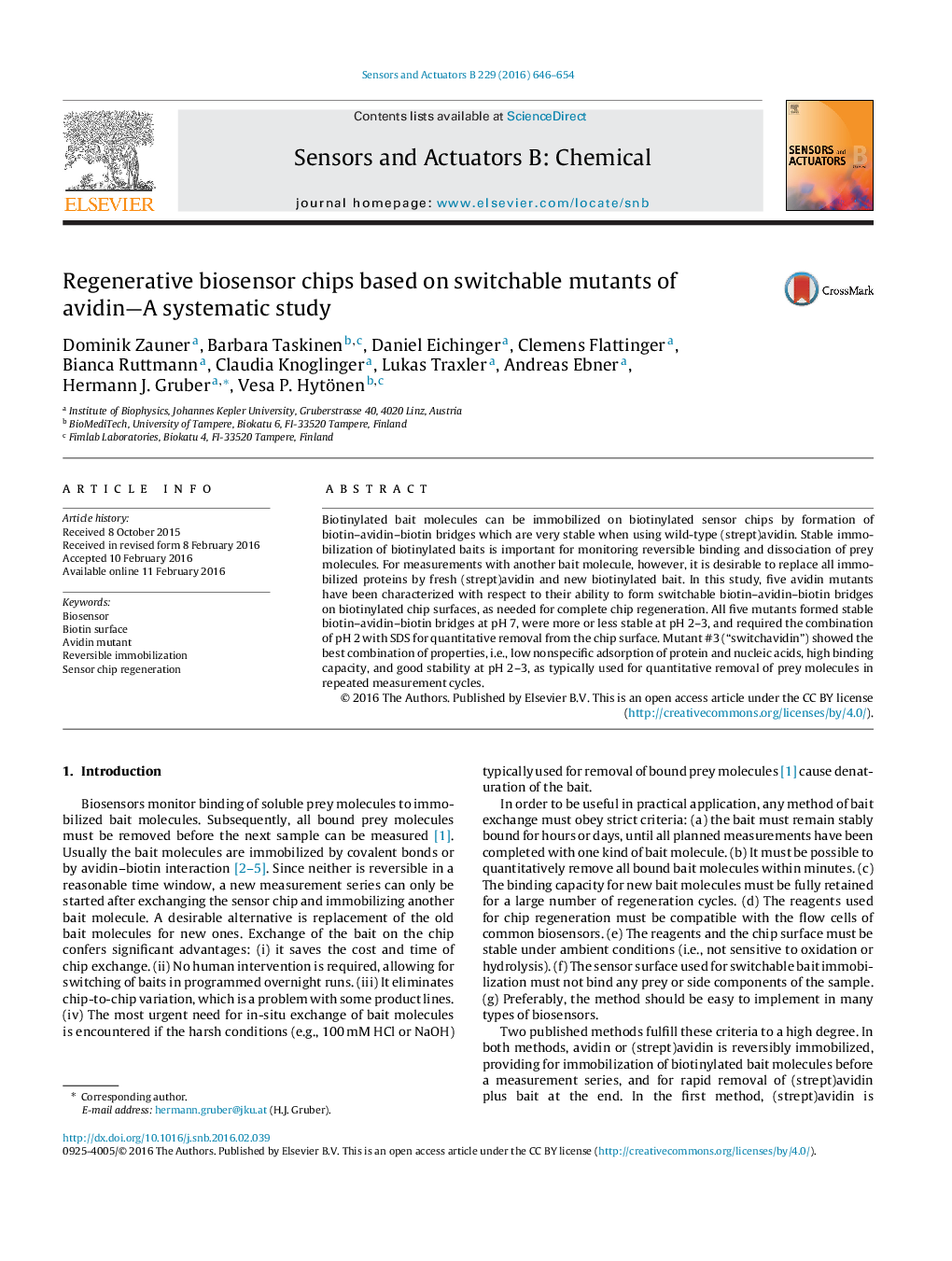| Article ID | Journal | Published Year | Pages | File Type |
|---|---|---|---|---|
| 7144461 | Sensors and Actuators B: Chemical | 2016 | 9 Pages |
Abstract
Biotinylated bait molecules can be immobilized on biotinylated sensor chips by formation of biotin-avidin-biotin bridges which are very stable when using wild-type (strept)avidin. Stable immobilization of biotinylated baits is important for monitoring reversible binding and dissociation of prey molecules. For measurements with another bait molecule, however, it is desirable to replace all immobilized proteins by fresh (strept)avidin and new biotinylated bait. In this study, five avidin mutants have been characterized with respect to their ability to form switchable biotin-avidin-biotin bridges on biotinylated chip surfaces, as needed for complete chip regeneration. All five mutants formed stable biotin-avidin-biotin bridges at pH 7, were more or less stable at pH 2-3, and required the combination of pH 2 with SDS for quantitative removal from the chip surface. Mutant #3 (“switchavidin”) showed the best combination of properties, i.e., low nonspecific adsorption of protein and nucleic acids, high binding capacity, and good stability at pH 2-3, as typically used for quantitative removal of prey molecules in repeated measurement cycles.
Keywords
Related Topics
Physical Sciences and Engineering
Chemistry
Analytical Chemistry
Authors
Dominik Zauner, Barbara Taskinen, Daniel Eichinger, Clemens Flattinger, Bianca Ruttmann, Claudia Knoglinger, Lukas Traxler, Andreas Ebner, Hermann J. Gruber, Vesa P. Hytönen,
